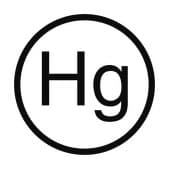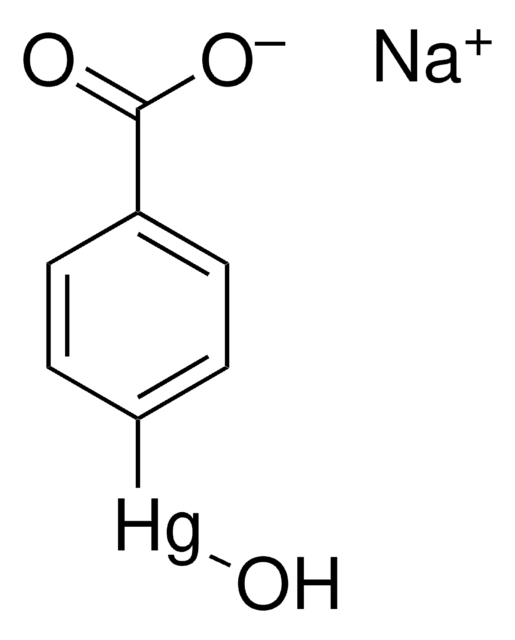M9784
Mersalyl acid
analytical standard
Sinónimos:
2-(3-Hydroxymercurio-2-methoxypropylcarbamoyl)phenoxyacetic acid, 2-[N-(3-Hydroxymercuri-2-methoxypropyl)carbamoyl]phenoxyacetic acid, Salyrganic acid
About This Item
Productos recomendados
grado
analytical standard
Nivel de calidad
Ensayo
≥85% (TLC)
técnicas
HPLC: suitable
gas chromatography (GC): suitable
mp
192-193 °C (dec.) (lit.)
solubilidad
NH4OH: soluble, clear to hazy
aplicaciones
forensics and toxicology
pharmaceutical (small molecule)
veterinary
Formato
neat
cadena SMILES
COC(CNC(=O)c1ccccc1OCC(O)=O)C[Hg]O
InChI
1S/C13H16NO5.Hg.H2O/c1-9(18-2)7-14-13(17)10-5-3-4-6-11(10)19-8-12(15)16;;/h3-6,9H,1,7-8H2,2H3,(H,14,17)(H,15,16);;1H2/q;+1;/p-1
Clave InChI
HQRSUIDICNOLPX-UHFFFAOYSA-M
¿Está buscando productos similares? Visita Guía de comparación de productos
Aplicación
Cláusula de descargo de responsabilidad

Palabra de señalización
Danger
Frases de peligro
Consejos de prudencia
Clasificaciones de peligro
Acute Tox. 1 Dermal - Acute Tox. 2 Inhalation - Acute Tox. 2 Oral - Aquatic Acute 1 - Aquatic Chronic 1 - STOT RE 2
Código de clase de almacenamiento
6.1A - Combustible acute toxic Cat. 1 and 2 / very toxic hazardous materials
Clase de riesgo para el agua (WGK)
WGK 3
Punto de inflamabilidad (°F)
Not applicable
Punto de inflamabilidad (°C)
Not applicable
Equipo de protección personal
Eyeshields, Faceshields, Gloves, type P3 (EN 143) respirator cartridges
Elija entre una de las versiones más recientes:
¿Ya tiene este producto?
Encuentre la documentación para los productos que ha comprado recientemente en la Biblioteca de documentos.
Nuestro equipo de científicos tiene experiencia en todas las áreas de investigación: Ciencias de la vida, Ciencia de los materiales, Síntesis química, Cromatografía, Analítica y muchas otras.
Póngase en contacto con el Servicio técnico











